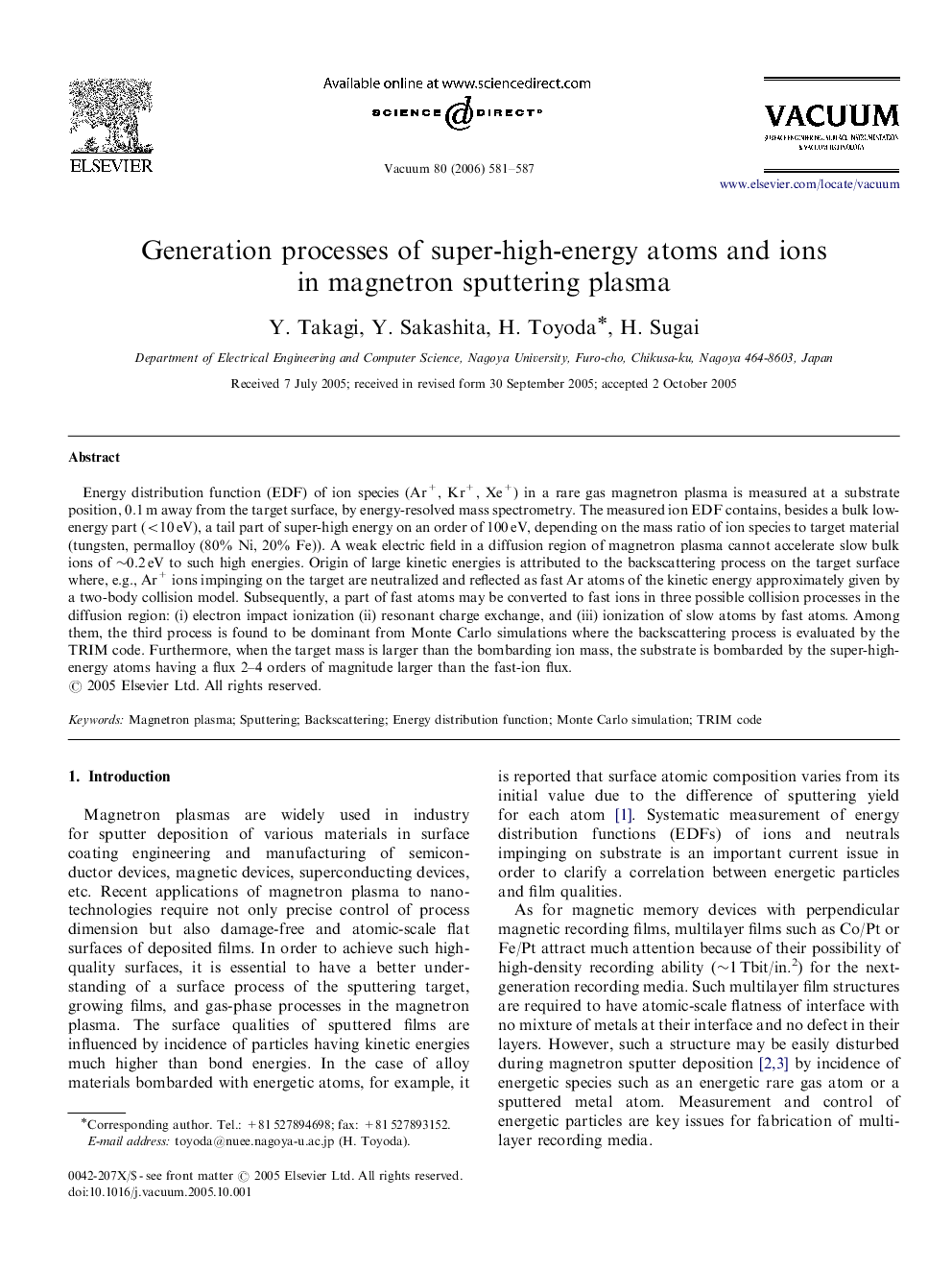| Article ID | Journal | Published Year | Pages | File Type |
|---|---|---|---|---|
| 1691711 | Vacuum | 2006 | 7 Pages |
Energy distribution function (EDF) of ion species (Ar+, Kr+, Xe+) in a rare gas magnetron plasma is measured at a substrate position, 0.1 m away from the target surface, by energy-resolved mass spectrometry. The measured ion EDF contains, besides a bulk low-energy part (<10 eV), a tail part of super-high energy on an order of 100 eV, depending on the mass ratio of ion species to target material (tungsten, permalloy (80% Ni, 20% Fe)). A weak electric field in a diffusion region of magnetron plasma cannot accelerate slow bulk ions of ∼0.2 eV to such high energies. Origin of large kinetic energies is attributed to the backscattering process on the target surface where, e.g., Ar+ ions impinging on the target are neutralized and reflected as fast Ar atoms of the kinetic energy approximately given by a two-body collision model. Subsequently, a part of fast atoms may be converted to fast ions in three possible collision processes in the diffusion region: (i) electron impact ionization (ii) resonant charge exchange, and (iii) ionization of slow atoms by fast atoms. Among them, the third process is found to be dominant from Monte Carlo simulations where the backscattering process is evaluated by the TRIM code. Furthermore, when the target mass is larger than the bombarding ion mass, the substrate is bombarded by the super-high-energy atoms having a flux 2–4 orders of magnitude larger than the fast-ion flux.
